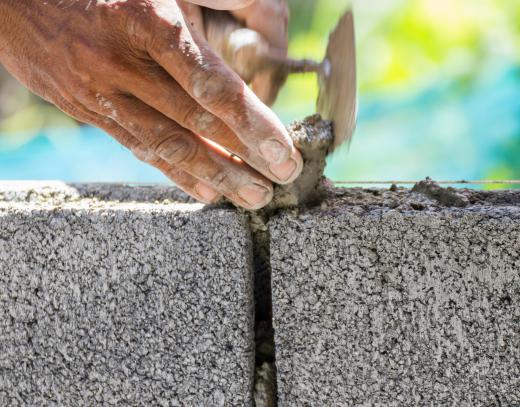A cavity wall consists of two separate walls that have been built closely together with a space in between them. Each of these walls can be constructed of a different type of masonry, such as brick or concrete, or from other materials. The resulting space allows the cavity wall to be more efficient at insulation than a single-layer wall, or one that consists of two layers that have been bonded together where the space would have been. Moisture that is absorbed into the masonry of the outer wall will typically drain through the space and out of the base of the wall, which is another benefit to this type of structure.
The efficiency of cavity walls makes them ideal for use when constructing houses or buildings in colder climates. Loss of heat can be reduced greatly by the cavity, which results in lower heating bills while being less detrimental to the environment. Additional insulation may also be placed within the space of the wall that will add to its heightened level of efficiency. In order to be at its most efficient, the space in a cavity wall must be sealed off where doors and windows are build into the wall.

In an example of a typical cavity wall, the outer portion will be made of a layer of bricks, while the inner layer will be constructed of heavier, wider materials, such as concrete blocks. The outer layer may be covered with some type of siding, but is more often left exposed for the aesthetics of the house or building. The space in between can vary in size. Larger spaces are better at insulating the interior of a building, while smaller spaces preserve a greater amount of area that can be devoted to interior floor space. Also, holes referred to as weep holes usually exist on the outer layer of a cavity wall that serve as drainage holes for moisture that has worked its way into the interior space of the wall.
This type of wall was devised and put into use in the 19th century in the United Kingdom, and is now employed throughout the world. Initially, the main use was for the prevention of moisture from entering through walls, but the purpose of using cavity walls nowadays is mainly insulation. Adding to their importance are the many types of environmental concerns that exist today, including the reduction of environmental waste and the preservation of natural resources such as fossil fuels.
